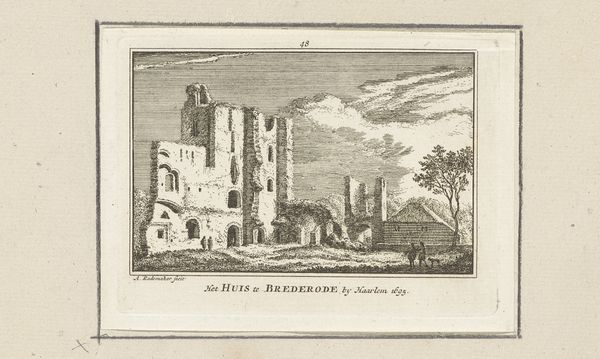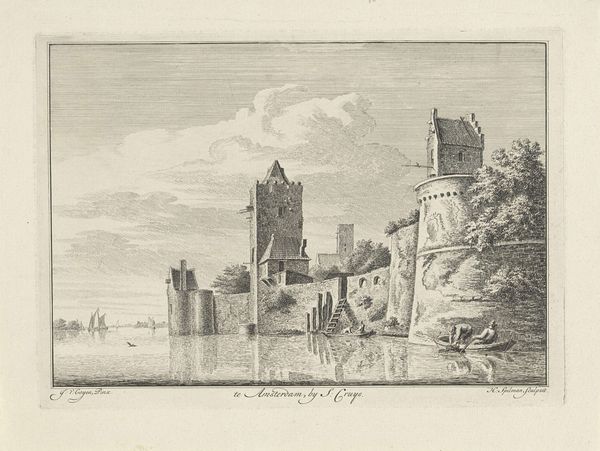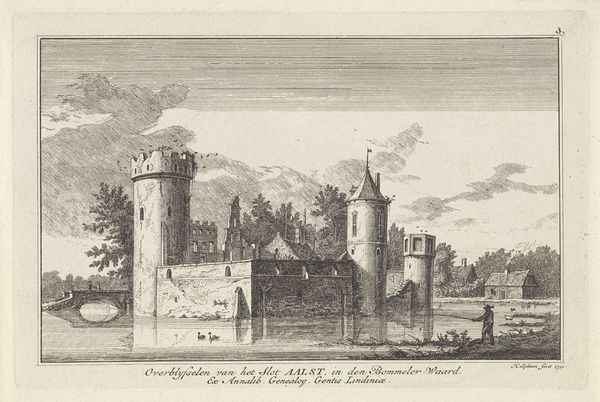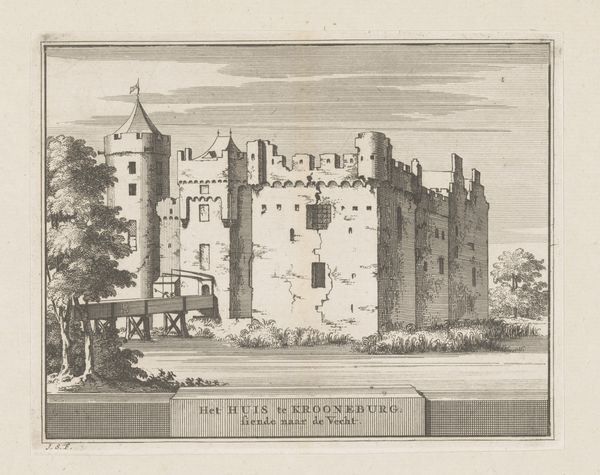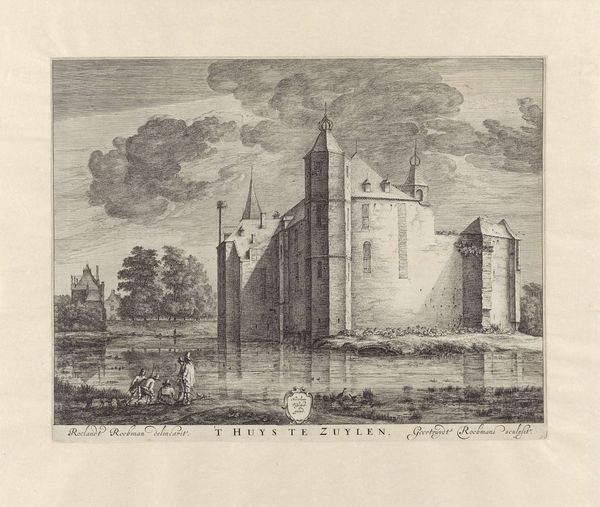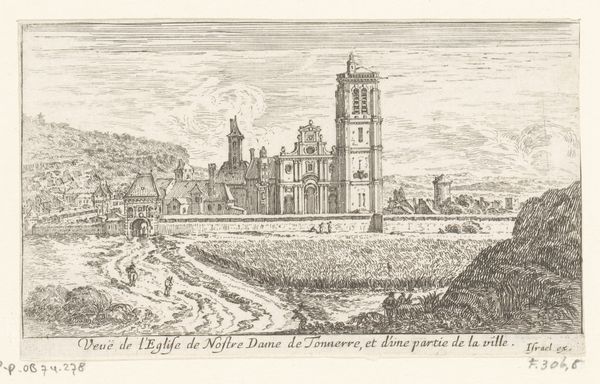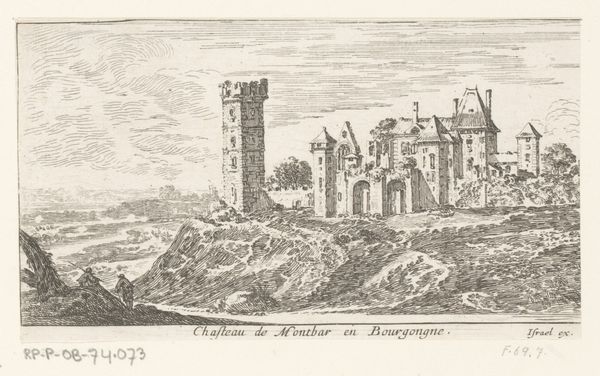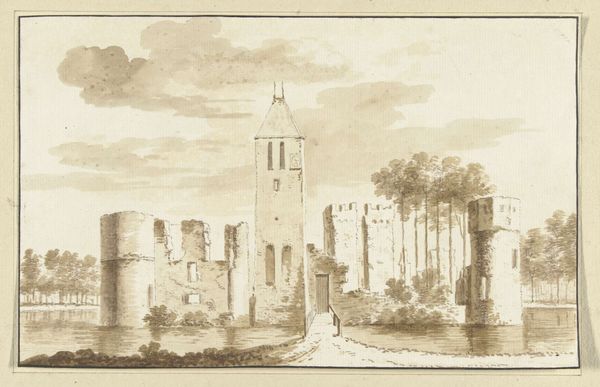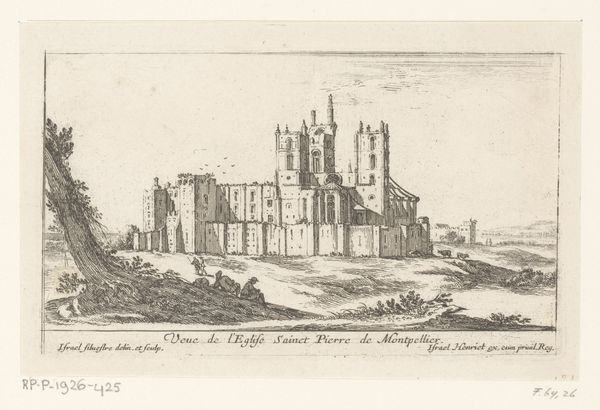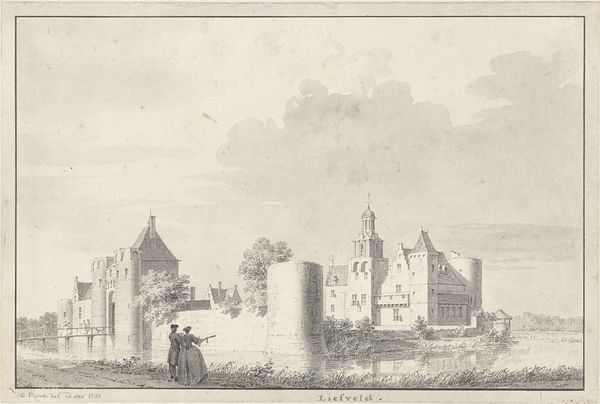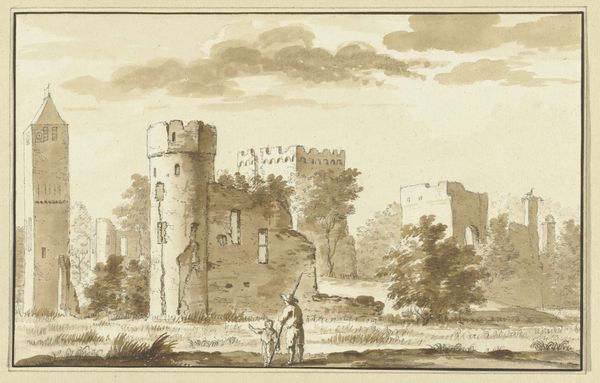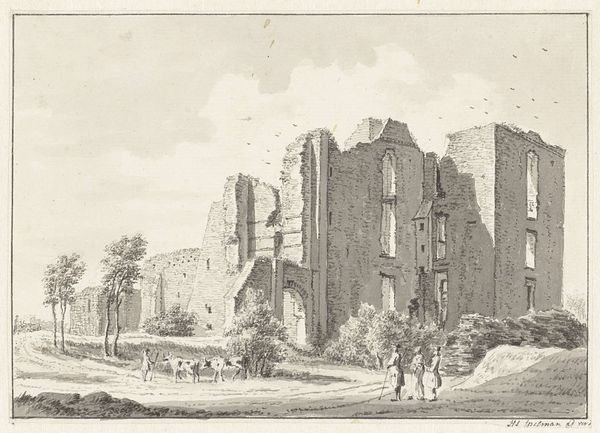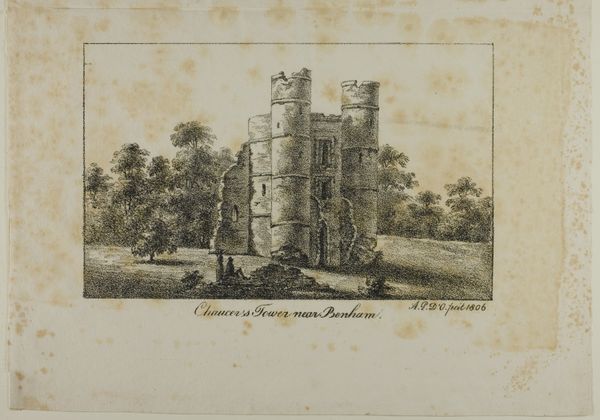
Gezicht op de ruïne van het Huis te Merwede in Dordrecht 1711 - 1774
engraving
baroque
landscape
cityscape
engraving
Dimensions: height 143 mm, width 180 mm
Copyright: Rijks Museum: Open Domain
Editor: Here we have Jacobus Schijnvoet's engraving, "View of the Ruins of the Huis te Merwede in Dordrecht," likely created sometime in the mid-18th century. I’m struck by its melancholy. A ruined castle looms over a tranquil landscape. What story do you think this engraving tells? Curator: Well, isn’t that the perpetual question of art: what whispers from the stone, from the etched line? It's a memento mori, for sure. The glory of architecture, now a ghostly shell. See how Schijnvoet captures the delicate light on the crumbling stone? Makes you wonder, doesn't it, about the fleeting nature of even the grandest ambitions. I almost feel as though time itself is the artist's chisel. Editor: Memento mori, that makes sense. The detail in the ruin juxtaposed with the smooth sky definitely emphasizes the ravages of time. But why engrave a ruin? What was the purpose? Curator: Perhaps it’s a romantic gaze back to a past glory – or maybe even a political commentary couched in aesthetic observation. Remember, ruins in this period often became potent symbols for reflections on power, the decline of empires, or simply the sublime power of nature. A nice souvenir too. The tiny Dordrecht skyline seems to wink at the viewer... We were here, and are still standing. A nice counterpoint. Editor: That's a great point about the symbolism of ruins. I never considered the political implications before. Curator: Exactly! Art has this delightful way of being both deeply personal and utterly universal, doesn't it? Editor: It certainly does. I’ll definitely be looking at ruins with a fresh perspective now. Curator: And that's the best kind of art encounter – one that leaves you pondering, and perhaps forever alters your gaze.
Comments
No comments
Be the first to comment and join the conversation on the ultimate creative platform.
